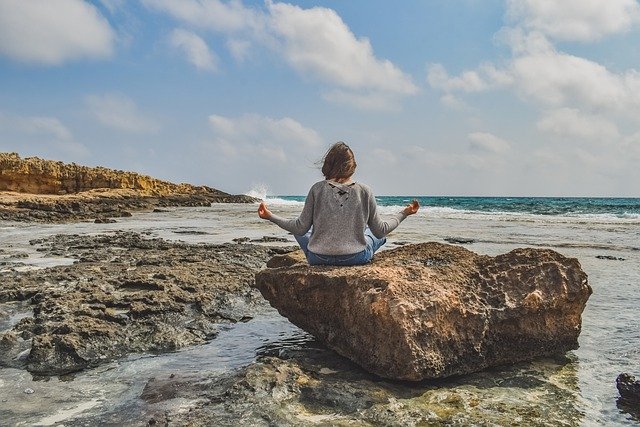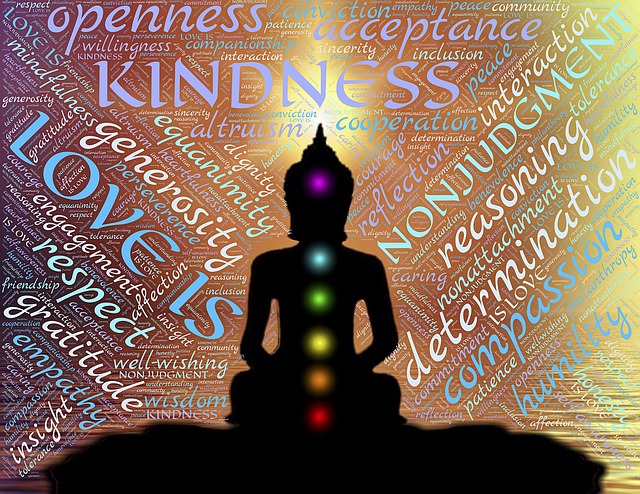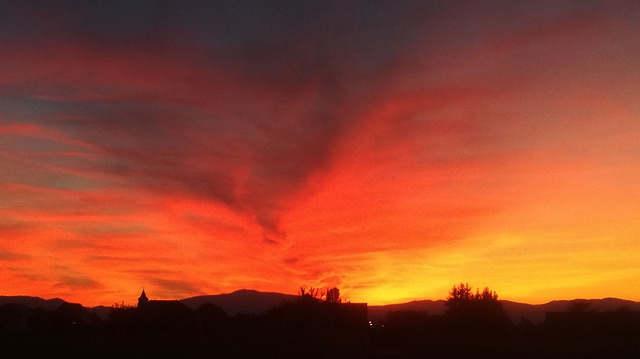Allyson Pimentel, in a guided meditation podcast, reminds us of the benefits of mindfulness that have been confirmed through neuroscience. Allyson is a mindfulness teacher with the Mindful Awareness Research Center (MARC), UCLA. She often leads the mindful awareness sessions, held weekly at the Hammer Museum and/or online.
Allyson defines mindfulness as “deliberately paying attention to what’s happening around you, within you and between you [and others]”. She asserts, along with other meditation teachers, that this means accepting “what is” while adopting a non-critical and non-judgmental stance. Our thoughts can be a distraction from this deliberate attention giving but, as Allyson points out, the role of the brain is to think. Our brains are designed to enable planning, memorizing, remembering/recalling. analyzing, critiquing, creating and comparing. In mindfulness meditation, we develop our awareness muscle by constantly returning to our anchor, not sustaining the distraction but treating it as clouds passing by.
One of the anchors that Allyson addresses during the guided meditation is listening to sounds. She suggests that our ears are a doorway to the outside world and all that is happening there. She argues that our senses – hearing, tasting, touching, seeing, smelling – are effortless tools for accessing the external world. She quotes from the poem of Joy Harjo, Remember, to reinforce the beauty and diversity that is around us to take in, if we are mindful – the plants, animals, dawn, sundown, earth, stars, and everything else that makes up our universe, including our parents and siblings and our ancestors who have gone before us. Joy Harjo is an acclaimed poet who was appointed United States poet laureate in 2019 and is the Chancellor of the Academy of Academic Poets.
Guided meditation
Allyson encourages us at the outset of the meditation to become comfortable, something that is different for every person depending on their current level of health and wellness and their means of physical comfort. Once we are physically comfortable, we can employ a strategy to become grounded and focused – for some it may mean taking a deep breath or for others it will involve stretching or yawning. Allyson invites us to close our eyes “so that our inner eyes can open”.
In the next stage of the guided meditation, she encourages us to listen to the sounds within us and around us – and to do so without interpretation, just opening our ears. Sounds can provide us with an anchor if our thoughts wander. However, I personally find them more of a distraction than using the alternative anchor Allyson proposes, our breath.
Allyson encourages us when using breath as anchor to try to locate the place in our body where we can best sense our breathing – chest, abdomen, or nose. Then to focus on the sensations associated with our breath, e.g., hot or cold, calm or agitated, slow or fast, deep or shallow. Our breath can be a doorway to ease and tranquility, provided it is not a stimulus to a trauma response. Many mindfulness teachers encourage us to choose a meditation anchor that best suits us individually and encourage us to be conscious of trauma-sensitive options. Allyson builds in this sensitivity throughout her guided meditation, including providing choice of posture, grounding technique and anchor.
Reflection
Stillness and silence provided through meditation enables us to surf the “waves” of life, and not go under when we encounter turbulence. Allyson’s guided meditation reminds us about how easy it is to access our breath which is always with us in the present moment. Meditation can enable us to develop a profound consciousness of our breath, as well as the sounds that surround us.
As we grow in mindfulness through meditation practices, we can experience ease and tranquility, develop the capacity to deal constructively with life’s challenges and open our minds and hearts to others as we increase our awareness of our connectedness.
_________________________________
Image by DanaTentis from Pixabay
By Ron Passfield – Copyright (Creative Commons license, Attribution–Non Commercial–No Derivatives)
Disclosure: If you purchase a product through this site, I may earn a commission which will help to pay for the site, the associated Meetup group, and the resources to support the blog.









